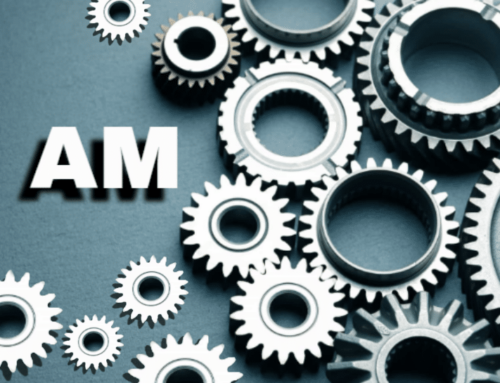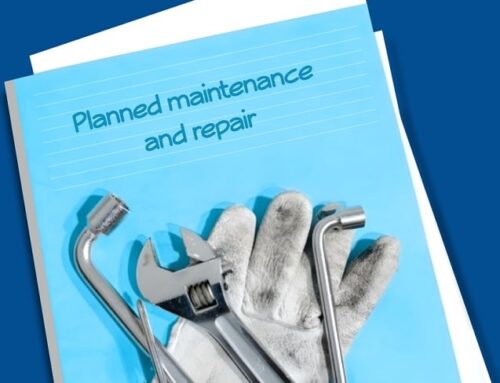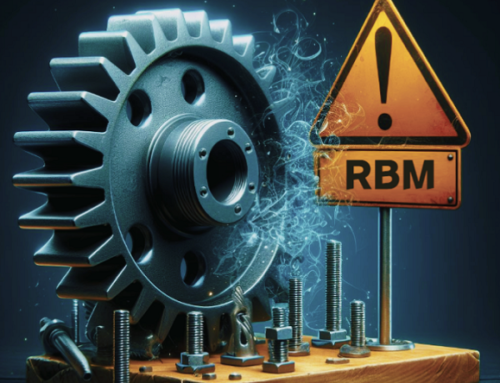Total Productive maintenance and repairs (TPM)
Kudos to the maintenance team for not experiencing any unexpected breakdowns
It may seem illogical to reach the motto of the above sentence, but this is the ultimate goal of any organization that decides to implement production maintenance and repairs.
Since fully implementing a preventive maintenance and repair approach can take years, you need to make sure you have a good understanding of what lies ahead and the tools that can make the transition easier. One such tool is a maintenance and repair software (CMMS), as many of its standard features fit well with TPM requirements.
-
What is Total Productive Maintenance (TPM)?
Total Productive Maintenance is an active asset maintenance system that focuses on keeping the organization’s equipment in optimal working condition, increasing equipment availability, preventing breakdowns and delays in core processes.
Unlike other maintenance strategies with TPM, machine operators are involved in the process of equipment maintenance and repairs. Total Productive maintenance and repairs can be implemented in various industries, but due to its unique approach to maintenance and repairs, it is mostly used in the production sector.
One of the factors that link Total Productive maintenance and repairs to manufacturing processes is overall equipment effectiveness (OEE). The easiest way to calculate the overall equipment effectiveness index is to multiply the number of good products made in the ideal cycle time and then divide them by the planned production time, with the ultimate goal of tracking progress toward “full production” with a grade that It ranges from 40 percent for inefficient systems to 100 percent for perfect production.
-
What are the goals of Total Productive maintenance and repairs?
-
What are the benefits of Total productive maintenance?
What are the benefits of Total productive maintenance?
Companies using total productive maintenance, unlike organizations that maintain their systems in a traditional way, have the following advantages:
-
How to implement total productive maintenance in our organization?
Pervasive Productive Maintenance is a system that transforms the way an organization operates. Using this software is not an immediate solution to solve problems, and depending on the complexity of the organization’s organs, it may take years to fully set it up.
Like other manufacturing tools, TPM is implemented in systematic steps. Next, we will take a look at the implementation of the 12-step approach for total productive maintenance. An organization can tailor the implementation process to suit its existing business or resources. Therefore, the organization may choose a smooth start with a test rig, or it may decide to implement total productive maintenance with all machines in one unit, before expanding to other units.
Primary level
-
Step 1 – Total Productive maintenance and repairs declaration
After sufficient investigations, the senior management will announce its decision and commitment to introduce total productive maintenance. The information reaches the employees through meetings, e-mails, etc.
-
Step 2 – Launch the training program
After starting, it starts training programs to provide its top managers with complete knowledge of total productive maintenance. The rest of the employees are also trained after a short period of time.
-
Step 3 – Establish Total Productive maintenance and repairs organizational teams
The preparation of the program continues with the formation of the total productive maintenance team. These groups will be responsible for creating and promoting the desired organizational models that are suitable for that company.
-
Step 4 – analysis and determination of the goal
Committees and senior management will implement the following based on total productive maintenance training and analysis of company rules:
-
Step 5 – Create a detailed master plan
A good starting point is a 3-year master plan for the entire TPM implementation. This plan documents how to do things and steps to introduce each of the eight pillars of TPM.
This plan contains all the details needed to implement TPM. It should also cover the unique issues and challenges under which the organization operates. Failure to do so means that the master plan is impractical, and can cause serious setbacks in the early stages.
Start stage
-
Step 6 – Start your comprehensive productive maintenance program
Step 6 – Start your comprehensive productive maintenance program
At this point, the organization formally begins its TPM program. This step shows the company’s commitment to this new system.
Implementation stage
-
Step 7 – Implement maintenance improvements
The goal here is to guide the various equipment into proper operating conditions and create a planned maintenance and repair schedule before handing it over to the operators, which includes both new and old assets.
The maintenance team must:
-
Step 8 – Run standalone maintenance
Before any training or transfer of responsibility from maintenance technicians to machine operators is done, it is important to first determine what tasks the operators can handle without disrupting their work flow. Also, the maintenance team should still check the equipment at regular intervals and not leave the assets completely to the discretion of the operators.
After the settlement, training of operators can begin. Operators must be trained and thoroughly tested to ensure they can:
Creating simple maintenance and repair checklists is a useful aid that operators can use independently in maintenance and repairs; Also, visual aids and diagrams help reduce errors.
-
Step 9 – Implementation of the safety, health and environment pillar
The importance of safety should never be forgotten. HSE is related to all elements of total productive maintenance.
HSE stands for Health, Safety and Environment.
-
Step 10 – Perform quality maintenance
Similar to the HSE column, quality maintenance is applied to all areas of the organization and the implementation of total production maintenance and repairs. If quality is considered unimportant, trying to implement total productive maintenance is useless.
During this stage, people must implement established standards with the aim of reducing defects in the production process, so it is very important to be proactive about maintaining quality.
Some of the ways to achieve this goal are through manual inspection of assets and the use of condition monitoring sensors.
-
Step 11 – Implementation of Total Productive maintenance and repairs of the administrative department
By studying the processes of the administrative part of the business, any sources that harm the organization are easily identified. This step is actually creating a detailed plan to eliminate inefficient areas and waste. The biggest losses in the administrative sector are energy consumption and paper waste.
All office equipment should be collected and assigned to specific staff for follow-up and maintenance.
Establishment stage
-
Step 12 – Continuous improvement
At this stage, the implementation of total productive maintenance is complete, but there is always room for improvement. The organization should conduct routine audits of each department, while still seeking to increase overall performance.
total productive maintenance is a tested system that is used in manufacturing plants in terms of facilities, buildings, and machines.
While it brings many benefits, effective maintenance and repair requires a thorough strategy and commitment as it can take years to fully implement. An incomplete approach will not provide the desired result.
The good news is that by implementing this system, organizations will achieve a better position than before.
Before starting any changes in your maintenance department, you need to make sure that your main maintenance operations and procedures are well set up, defined and tracked. If you need help in this matter, you can contact us.








